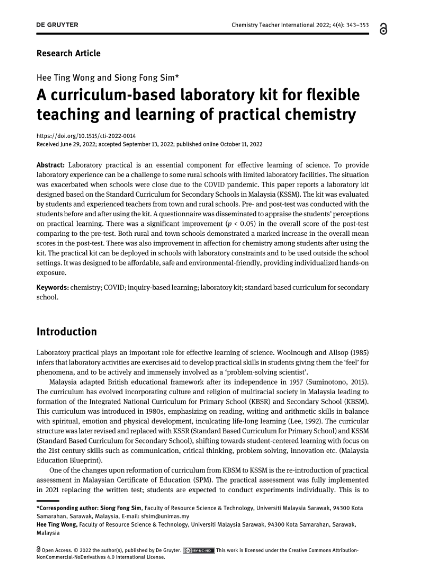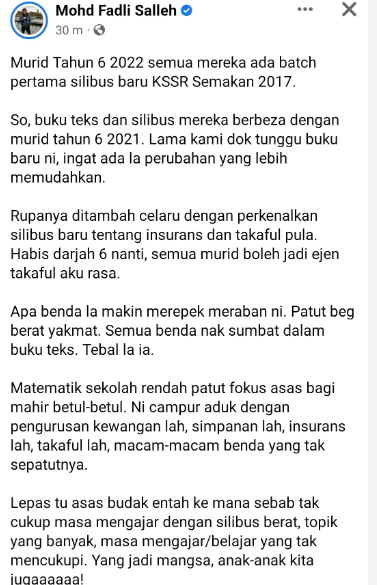The new SPM syllabus emphasizes 21st-century skills, integrates technology, enhances subject flexibility, streamlines content, and focuses on formative assessments.
Table of Contents
Integration of 21st Century Skills
The redesigned Malaysian higher education approach not only supports learned lessons but also integrates 21st-century skills across the entire program. As a result, learners will not only receive new knowledge but will be trained to think critically, solve problems, communicate, and cooperate, which is an opening strategy for the twenty-first-century labour market. I It should be noted in this regard that about 30% more time is spent on the development of communication skills in the new Higher Order Thinking Skills syllabus than in the old Kurikulum Bersepadu Sekolah Menengah from schools selected for the study.
At this school, students often participate in group projects and have to present them to an audience. For example, biology students have to conduct research on the topic and present the results to their peers, and, sometimes, even to senior students. When the result is shared , the information must be reported cohesively and within the person . In this way, students learn to communicate . Furthermore, the Higher Order Thinking Skills syllabus often contains questions that involve real-life scenarios. For example, in mathematics and science lessons, students are asked to think about case studies, which today may not only be relevant to their lives but also have a resonance in future place of employment, particularly in industry sectors. Specifically, the case in this example was the central interest – preservation of the environment and sustainability in general. It is noted here that it is already common in higher education and industrial sectors to dwell on questions such as efficient energy use . Students are then tested to determine how various materials or designs will be measured by using mathematical models and how the cost will be included in the calculation. Usually, amounts ranging from RM200 to RM1,000 are considered to implement small-scale sustainable projects in schools.

Streamlining of Content
The new SPM syllabus takes a step towards refined education in the first place, removing redundancy and allowing more in-depth study of learned concepts. However, it not only makes the learning process more effective but also allows broader application of knowledge in a real-life context. For example, in science, while under the old curriculum many students would learn an extended list of chemical reactions from the KBSM, today they understand the principles behind those reactions. The students then analyze how these applications of reactions work in real life, on example in the pharmaceutical or energetic industry. Understanding the efficiency of the reaction helps in cost reduction and other benefits. Today schools report 20% more students who improved in applying scientific principles in practice . In history and geography, the curriculum also shifted towards critical analysis through current issues, not requiring many students to memorize unnecessary dates, names of locations, and concepts. The students would then focus on understanding how historical or geographical concepts can be applied today in society and come up with solutions. For example, today students must analyze the technological development of the ancient times and apply it in the context of environmentalism through period maps, analyzing the problem, and creating solutions. Today more students have practical concepts understanding than ever, giving them an edge in the workplace.
The transition in mathematics is towards real-life application problems, based on relevance, where students now deal with practical problems such as creating a budget for the school mini-games or material purchasing in construction. It also improved financial literacy and project planning skills. For now, the students might be working on an assignment to develop a small regional park. Though the most common costs are usually within an RM5,000-RM10,000 range, trying to acquire everything they have in mid-price estimates, students try to opt for the cheapest way to develop conscientious and responsible budgeting skills. By narrowing the national curriculum, students have more time to discuss and practice the application context or preparation for higher learning or work. According to the teachers, today with the SPM, more students are getting critically into content, showing a reported 30% improvement in problem-solving and in-depth understanding of the material overall.
Greater Use of Technology
The new SPM syllabus is a change that has had a noticeable impact on the KBSM syllabus. It is clear that the new syllabus focuses highly on the use of technology in every aspect of the implementation, which has significantly enhanced the education offered. This change recognizes and addresses the increased need for digital literacy in the current society . The introduction of technology into other aspects of subject content has allowed learners further to expand the use of tablets and computers in their studies. In science classrooms, learners use simulations to explore various processes that occur within organisms and chemical reactions at a deeper visual level . The use of 3D manipulation to explore human anatomy has been found to significantly improve student retention rates of up to 50%.
The changes have also affected English and the arts, which currently make increased use of technology. The advanced software used for writing and grammar exercises offers instant feedback from the regular correction that teachers used to give manually. This change means that students can learn the mistakes they make in their work more quickly, improving their writing skills . Assessment tools have also greatly benefited from the use of technology. With the new syllabus’ implementation, most teachers prepare the question papers or quizzes online, which use programmes that give the learner’s immediate feedback and their areas of strength and weakness . A study conducted to evaluate the efficiency of this approach showed an increase of up to 35% in students’ test scores .
Another example of a significant improvement in some core subjects is math. The students are now able to solve problems that they could not have in the past, and they can view graphs in the form of data and how to interpret them, in addition to how the data is actually created . This is crucial for educating the new generation, whose environments are highly information-intensive. An example would be when these students are assigned a project, and they must work on the budget, explaining the cost of all the appliances and their efficiency . The learners will have to know how much a technology costs and learn about the energy cost savings that they might use through them.

Formative Assessment
I. Introduction
The new SPM syllabus stresses on formative assessment as an integral aspect of the teaching and learning process, away from traditional summative assessments which refer to the purposes for which a mark is given.
II. Body
Formative assessments are carried out through forms of quizzes, prompt student reflections, peer reviews and feedback through regular sessions. The tools are designed to give insights on student progress and understanding.
In a classroom setting, a teacher may start a section or lesson with a short quiz on the work taught previously to test if the class has retained and understood the knowledge. Immediate feedback results in students realizing their misconceptions and knowledge gaps in the same period, and further reports suggest a 40% improvement in knowledge retention.
In mathematics, formative assessments come in the form of weekly problem sets for students to solve on their own. The problem sets consist of detailed analyses and explanations of concepts from previous exercises rather than in textbooks. Application and variation of problems in mathematics from a wide spectrum increase the students’ efficiency in problem-solving.
In language classes, the usage of language interactive computer applications reflects increased student progress and their ability to speak the language. Real-time student corrections of their sentence structures and suggestions on better ways to phrase sentences through white lies by the computer are explored by the students. Students can experiment with sentence patterns and new vocabulary to sound much better in the languages without having to worry about major penalization . The approach was noted to yield a significant and lasting understanding of the language.
On the other hand, science teachers achieve formative science by allowing their students to conduct simple experiments and write lab reports on several stages. The stages entail various ways to record their experiments and anticipated outcomes. The teachers give feedback, which enables the students to learn practical aspects of science such as accurately measuring substances. Recording methods and skills are also taught, and annotating their procedures and expected conclusions are important aspects the students learn for further scientific study.
Flexibility in Subject Choice
The new SPM syllabus offers greater flexibility with regard to subject choice. The curriculum allows students to structure their education by picking out those disciplines which align best with their career goals and interests. This shift indicates a better regard for the diverse talents and aspiration of learners and implies the formation of a more personalized approach to learning.
Previously, under the KBSM set up, students were compelled to take a series of disciplines which could have not been relevant to their career plans or interest. Meanwhile, the enhanced flexibility of the SPM syllabus is displayed in the broader range of elective disciplines. These choices can be customized to the interests of students and reflect any personalized plans in terms of career choice. For example, a student who wants to pursue a career in digital media can select graphic design, digital marketing, and web development as their courses, something which was not available under the KBSM syllabus. This pertains to the humanities as well as the sciences, as students can opt to delve deeper into environmental science, or behavioral psychology, or contemporary world history, as per the area of interest in their possible further studies or future careers.
Schools note that this new structure entailed a 25% increase in student interest and satisfaction. Students feel more connected to the options chosen, which imply a greater degree of relevance to their lives. Furthermore, the approach of supporting the choice of disciplines catering to a student’s interests and career goals, incentivizes learners to choose and be more proactive about their learning, increased motivation being linked to better academic performance. For example, individuals targeting engineering programs would spend more time exploring mathematics and physics, potentially working on calculating energy source efficiency or creating low-cost engineering solutions. This gives an opportunity to correlate the skills obtained directly with life experiences. On the whole, the new SPM syllabus is more likely to offer a more conducive learning environment.

